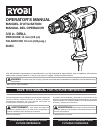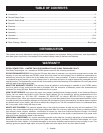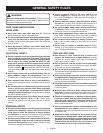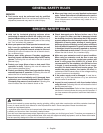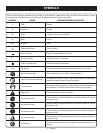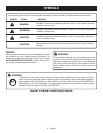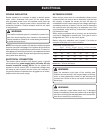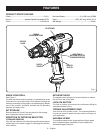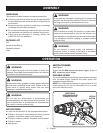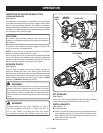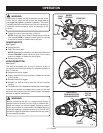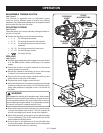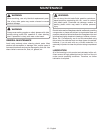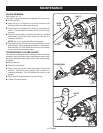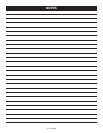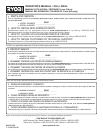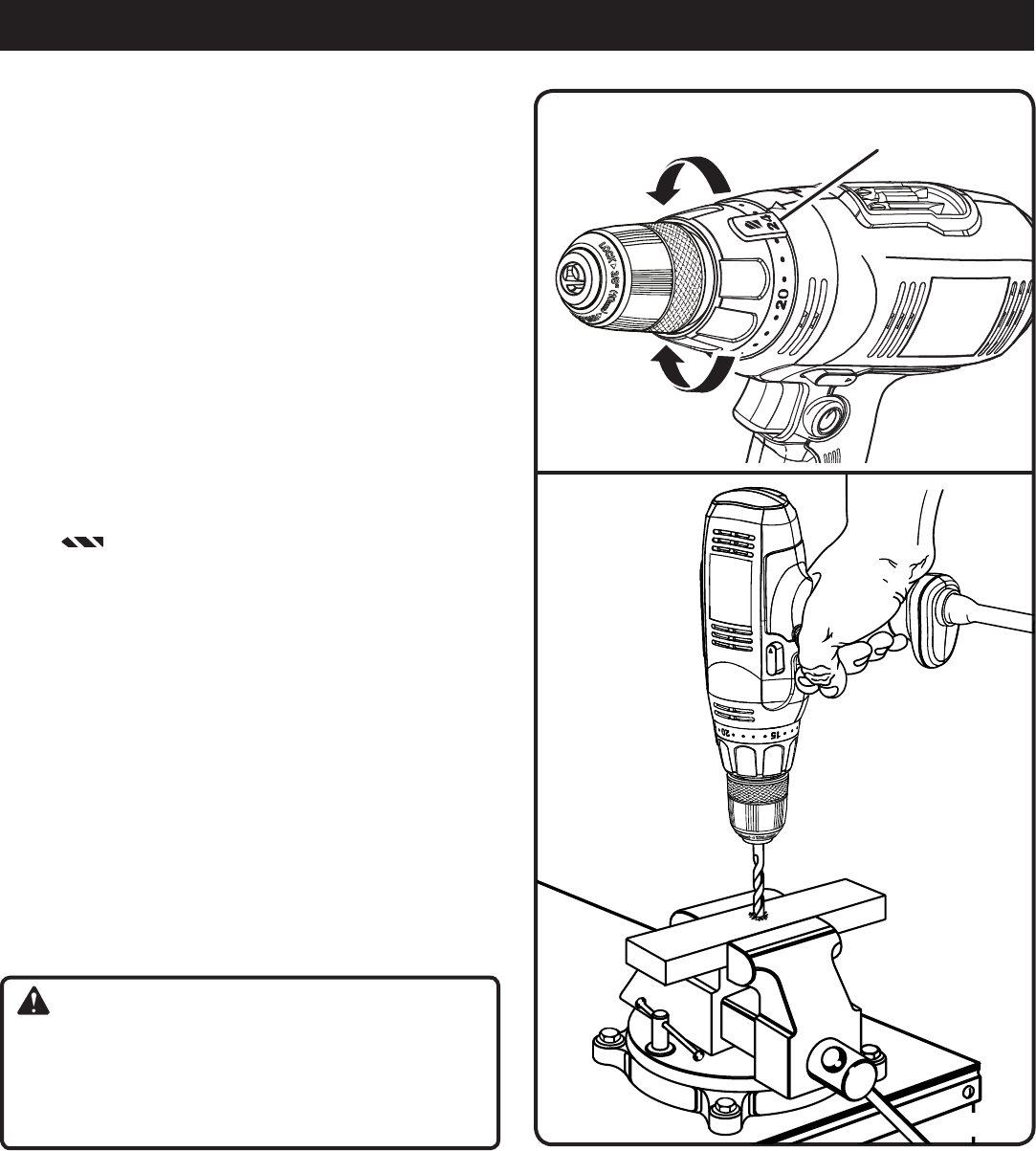
OPERATION
ADJUSTABLE TORQUE CLUTCH
See Figure 8.
This product is equipped with an adjustable torque
clutch for driving different types of screws into different
materials. The proper setting depends on the type of material
and the size of screw you are using.
ADJUSTING TORQUE
See Figure 8.
There are twenty-four torque indicator settings located on
the front of the drill.
Rotate the adjusting ring to the desired setting.
• 1 - 4 For driving small screws
• 5 - 8 For driving screws into soft material
• 9 - 12 For driving screws into soft and hard
materials
• 13 - 16 For driving screws into hard wood
• 17 - 23 For driving large screws
• For heavy drilling
DRILLING
See Figure 9.
Depress and release the switch trigger to be sure the drill
is in the OFF position before connecting it to a power
supply.
Check the direction of rotation selector for the correct
Secure the material to be drilled in a vise or with clamps
Plug the drill into power supply. Hold the drill firmly and
Depress the switch trigger to start the drill.
Move the drill bit into the workpiece, applying only enough
pressure to keep the bit cutting. Do not force the drill or
apply side pressure to elongate a hole. Let the tool do
the work.
WARNING:
Be prepared for binding at bit breakthrough. When these
situations occur, the drill has a tendency to grab and kick
in the opposite direction and could cause loss of control
when breaking through material. If not prepared, this loss
of control can result in possible serious injury.
When drilling hard, smooth surfaces, use a center punch
to mark the desired hole location. This will prevent the
drill bit from slipping off-center as the hole is started.
When drilling metals, use a light oil on the drill bit to keep
it from overheating. The oil will prolong the life of the bit
and increase the drilling action.
If the bit jams in the workpiece or if the drill stalls, stop
the tool immediately. Remove the bit from the workpiece
and determine the reason for jamming.
TO INCREASE
TORqUE
Fig. 8
TO DECREASE
TORqUE
TORqUE
ADjUSTmENT RING
Fig. 9



